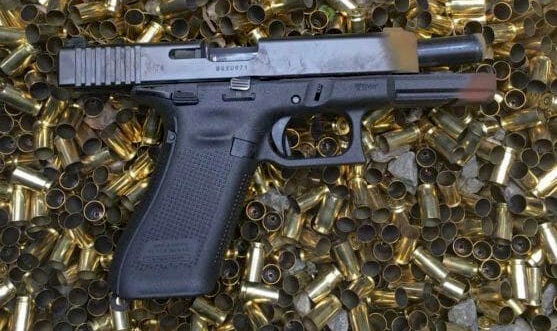Opinion: Do We Owe Glock a Debt of Gratitude?
Kevin Felts 01.29.19

Sometime around 1979 or so, my dad took his Smith & Wesson Model 66 357 magnum double action revolver out of the truck and showed it to my brother and me. We were at the deer camp for a weekend of hunting, and I was 11 years old. The blast and recoil of the 357 magnum left a lasting impression.
As a high school graduation present mom and dad bought me a S&W Model 66 just like dad’s; it is one of my most prized possessions. At the time, just about all police officers carried a revolver. Dad told me it was because of reliability and the power of the 357 magnum.
A few years later, let’s say around 1984, a buddy of mine showed me his dad’s 1911 — with his dad’s permission of course. We went behind the house and fired off a few rounds. If I remember right, the 1911 was a Colt and looked pretty beat-up.
Overall I was impressed with the 1911. It held seven rounds in the magazine, and one in the chamber for a total of eight. Besides holding two rounds more than the S&W Model 66, it was easier to reload.
Then along came the military tests for the M9, and numerous shootouts that changed how law enforcement looked at revolvers. Police departments, along with federal agencies, retired their revolvers and adopted the 9mm.
With this trend came numerous companies who jumped on the 9mm bandwagon.
A few examples:
- Beretta
- Glock
- H&K
- Sig
- S&W
- Ruger
Eventually, Glock became the dominating force in the handgun market, and for good reason. What we did not know in the 1980s and 1990s was that Glock was destined to reform the entire handgun market.
Glock Dominates the Market
When a young person considers buying a new handgun, chances are everything will be judged against a Glock model.
Some of the questions that may be asked:
Why doesn’t the Beretta 92f have a rail, like a Glock?
Why does the Beretta 92f only hold 15 rounds when the Glock 17 holds 17 rounds?
Why does the 1911 only hold 7 rounds when the G21 holds 13 rounds?
It may seem like all other handguns are inferior to Glock. I am sure some of the Glock fanboys are muttering under their breath, “That’s because everything is inferior to Glock.”
How many decades of development did it take us to reach this point in handgun evolution?
From 1979 we went from a S&W Model 66 Combat Magnum that weighs 2 pounds 4.70 ounces and holds six rounds, to 2019 and a Glock G45 that weighs 1 pound 9 ounces and holds 17 rounds.
Let’s take rails for example. There was once a time when rails were not even a factory option. Eventually aftermarket rails appeared, then various companies jumped on the rail bandwagon. Look back to the 1980s and 1990s, how many handguns came with a factory rail? Maybe a handful, if even that many. Today it seems like every new handgun has a rail… even the new $200 Hi-Point.
Then there is magazine capacity. There was once a time when 15 rounds was the industry standard. Now it is 17 or more rounds.
Something that made Glock stand out is magazine interchangeability. If someone has a G17 and a G19, they can stockpile G17 magazines and the magazines will work in both handguns. Which is unlike the Beretta APX, which ignored several decades’ worth of 92f magazines already on the market.
Ruger jumped on the magazine interchangeability bandwagon with some of the P series. However, those models were phased out.
Final Thoughts
With more than a century of development we are at the pinnacle of handgun evolution. From the mid-1980s until today, what handgun company has pushed the limits more than any other? It has to be Glock.
When companies like Ruger were releasing various models that ran for a few years and were then phased out, Glock stayed constant. For example, there was the Ruger P series, the SR, and now the American. The first Glock 17 was produced in 1982, and the 17 is still in production today.
30+ years after polymer handguns hit the market, Beretta finally released the APX. The first polymer handgun was released in 1970s, but never gained the fame of Glock.
We all may be a little spoiled by the current handgun market. Never before have we had access to ultra-reliable handguns that do not cost a small fortune. For example, in January 1989 I bought a Beretta 92f and paid around $700 for it. Adjusted for inflation, that is equal to $1,452 in 2019.
Perhaps we owe Glock a debt of gratitude. Not only has Glock forced its competitors to produce quality products, they’ve also kept prices down. Who is going to pay $1,400 for a Beretta 92f when a Glock 17 costs $500?
We probably have Glock to thank for the current handgun market, for setting a quality and price standard that all other handguns had to follow.